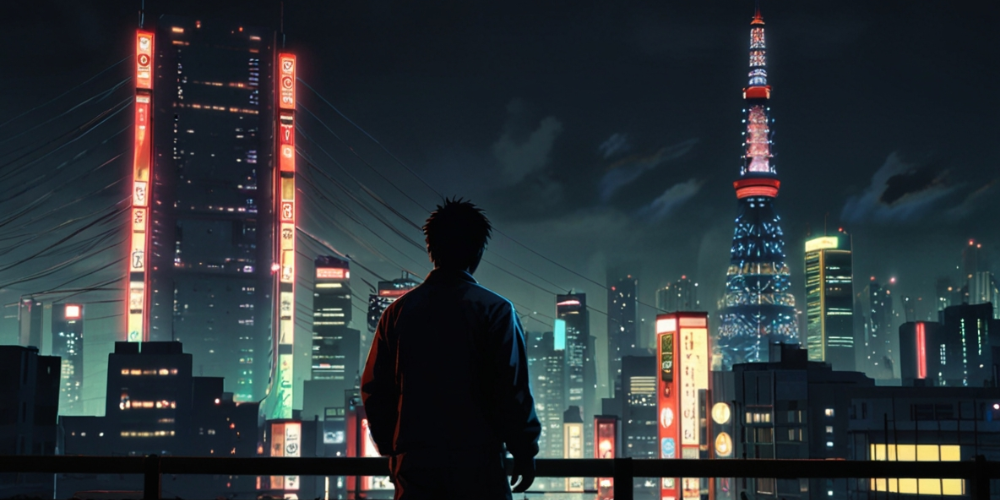Exploring the Lore of "Ghostwire: Tokyo"
Aug-12-2024

Ghostwire: Tokyo invites players into a hauntingly beautiful Tokyo, where the blend of traditional Japanese folklore and modern urban life creates a unique narrative tapestry. At its core, the game captivates with a captivating story that intertwines personal struggle with the supernatural, prompting players to delve into the eerie atmosphere that envelops the city.
Supernatural Entities and Their Origins
The world of Ghostwire is inhabited by various yōkai (supernatural creatures) rooted in Japanese mythology. These beings, such as the Tengu, Yuki-onna, and the Kappa, play important roles in the game’s narrative, each bringing their own distinct lore and personality to the experience. This rich tapestry not only enhances gameplay but also encourages players to explore the historical and cultural references inherent in these figures.
Main Characters and Their Arcs
At the forefront of Ghostwire: Tokyo is Akito, a young man whose life takes a dramatic turn after a mysterious event leads to the disappearance of Tokyo's population. He becomes entangled with spirits and supernatural forces as he searches for his sister, each step revealing the emotional depth of his character. His journey symbolizes resilience and the struggle against overwhelming odds.

An essential character is KK, an ethereal presence that follows Akito during the game. With a captivating history and a distinct viewpoint of reality, KK enriches the storyline. The complex relationship between Akito and KK acts as a catalyst for character growth, highlighting themes of redemption and selflessness.
The Haunting Atmosphere of Tokyo
One of the most striking features of Ghostwire: Tokyo is its atmospheric representation of Tokyo's neighborhoods. The blend of dimly lit alleyways, traditional shrines, and abandoned urban spaces evokes a sense of dread and mystery. Every space is thoughtfully designed, focusing on intricate details that invite discovery and ignite interest in the tales concealed within.
Gameplay Mechanics and Spiritual Combat
Ghostwire: Tokyo innovatively integrates stealth mechanics with combat, allowing players to engage in thrilling encounters with supernatural beings. Utilizing elemental techniques and spiritual powers, players can execute fluid movements and elaborate combos to defeat spirits. This unique fusion of skill and strategy heightens the intensity of the battles while maintaining immersion in supernatural themes.
Exploration and Collectibles

The game encourages exploration through its vast urban landscape filled with collectibles and hidden secrets. Discovering items such as Spirit Shards or interaction points reveals lore snippets about the world and characters. This rewarding exploration enhances the overall narrative, allowing players to piece together the history of Tokyo and its spirits.
Side Quests and Their Impact
Beyond the main storyline, the side quests in Ghostwire: Tokyo further enrich the narrative tapestry. Each quest presents its unique tale, often delving into personal stories of lost lives and unresolved destinies. Engaging in these quests helps players uncover more about Tokyo's past and the ghosts tied to specific locations, imbuing the game with emotional significance.
Visual Design and Aesthetic Influence
The art direction in Ghostwire: Tokyo marries realism with surreal aesthetics, crafting a visually stunning experience. The ghostly manifestations, in particular, bring an eerie beauty to the environment, while the character designs reflect a blend of traditional Japanese costumes and modern fashion influences. This visual storytelling successfully immerses players in a world that feels both familiar and otherworldly.
Sound Design and Immersive Audio

The audio design in Ghostwire: Tokyo plays a critical role in crafting the ominous atmosphere. From the unsettling whispers of the spirits to the haunting melodies that accompany exploration, the soundscapes are designed to evoke emotion and enhance immersion. This attention to auditory detail contributes significantly to the tension and overall experience of the game.
Connections to Traditional Folklore
The game intricately weaves traditional Japanese folklore into its narrative, providing players with insights into cultural beliefs and practices. By presenting the stories of yōkai and the folklore surrounding Tokyo, players can engage with the rich historical context that shapes the game’s events. This connection to cultural heritage fosters a sense of understanding and appreciation for the world depicted in the game.
Visual Storytelling Through Environment
The environments in Ghostwire: Tokyo tell their own stories. Abandoned areas, dilapidated buildings, and overgrown gardens serve as remnants of lives once lived. The careful placement of objects, graffiti, and urban decay paints a poignant picture of a city overcome by the supernatural. These visual cues prompt players to reflect on the narratives behind each location.
Personal vs. Collective Trauma

The game confronts themes of trauma, both personal and collective, through the interactions between characters and their circumstances. The loss experienced by both Akito and the spirits reflects deeper societal issues, making the narrative resonate on multiple levels. The emotional weight carried by the characters enhances the storytelling, allowing for relatable experiences amidst the fantastical elements.
Player Agency and Moral Choices
Throughout the gameplay, players are often faced with choices that impact the unfolding narrative. These moral dilemmas challenge players to consider the consequences of their actions within the game world. The freedom to choose paths influences character relationships and can lead to varying outcomes, emphasizing the complexity of the moral landscape while engaging players on a deeper level.
Community Interaction and Social Commentary
Ghostwire: Tokyo also serves as a commentary on community, connection, and the impact of isolation. As players encounter spirits representing lonely souls, the narrative reflects broader themes of disconnection prevalent in contemporary society. This aspect invites players to think critically about human relationships and the importance of empathy in a world marked by detachment.
The Artistic Fusion of Old and New
The game showcases a seamless blend of ancient spiritual beliefs with modern technology, symbolizing the harmony between tradition and progress. The symbolic representation of both yōkai and contemporary urban life portrays a culture that respects its past while navigating the complexities of the modern world. This thematic layering allows players to appreciate the richness of the cultural references embedded within the gameplay.







